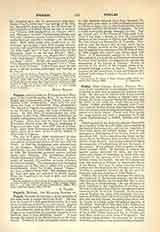

Fogaras, Archdiocese of ( FOGARASIENSIS), Hungary, of the Greek-Rumanian Rite. It has three suffragan sees, Grosswardein (Nagy Vitrad), Lugos, and Szamos Ujvar (Armenopolis). Since 1733 the residence has been at Balsszfalva (Blaj, Blasendorf). The Diocese of Fogaras was erected in 1721, suffragan to the Primate of Hungary (the Latin Archbishop of Gran). In 1853 Pius IX reestablished the archbishopric of Alba Julia (Weissenburg, Karlsburg), an ancient metropolitan title, and united it with the See of Fogaras. Since that time the head of the Greek-Rumanian Church bears the title of Archbishop of Fogaras and Alba Julia. Since 1697 (Synod of Karlsburg), when these Rumanians returned to Catholic unity, there have been eleven Catholic titulars of Alba Julia or Fogaras.
The city of Fogaras (6000 inhabitants) (in German Fagreschmarkt) is built on the Aluta. Its fortress played an important part in all the wars with the Turks. In 1849 the Hungarians were defeated here by the Russians. Balaszfalva, the residence of the archbishop, has also about 6000 inhabitants. Here, in 1848, the Rumanians protested against political union with Hungary. The archdiocese numbers 440,000 Rumanian Catholics. There are 720 priests, nearly all married, 705 parishes, as many churches, and several chapels. The preparatory and theological seminaries are at Blaj, also a college and a printing establishment, where the weekly journal “Unirea” has been published since 1890. The diocesan schools for boys and girls are attended by 60,000 pupils. There are 3 gymnasia for boys or girls, and several Convents.

